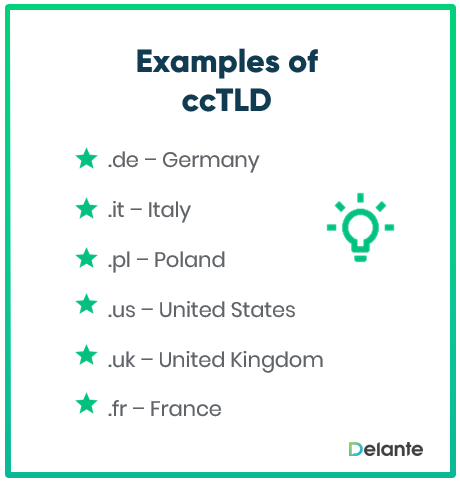Creating a Perfect International URL Structure

In the digitally advanced, internet age we’re living in, businesses need to establish a firm online presence to be successful in the international marketplace. Companies need to keep up-to-date with the latest SEO trends to differentiate from the competition. That’s why deciding on the right URL structure is so important.
International SEO can be daunting at the best of times, especially when there are multiple languages to navigate across many countries. International SEO is about so much more than simply trying to be found by search engines. It’s about evaluating your local target market prospects and understanding how to best market to them based on their buyer persona.
By building a profile of your target demographic, you can more easily market to them using advanced SEO techniques. Having a localized website is essential for building trust with local users, so they can easily access your website and interact with your brand.
So which factors should you consider when determining a URL structure that will help you thrive in today’s modern business world? Let’s start by taking a look at what a localized URL looks like:
What Does a Localized URL Look Like?
When creating an international website, there are three main choices for hosting your localized content:
- country code Top Level Domain (ccTLD) – i.e. yourcompany.fr
- subdomain – i.e. fr.yourcompany.com
- subdirectory – i.e. yourcompany.com/fr
But how do these options compare? Let’s delve a bit deeper into the advantages and disadvantages of each:
ccTLD
If you’re looking to focus your attention on a specific country, ccTLD will be the best option for you.
A ccTLD strongly indicates that you’re focusing on a specific country, which sends a strong signal to visitors that resonates with your target demographic and helps to build trust.
Once you’ve set up a ccTLD, it’s difficult to reconfigure a different URL structure and change the geo-targeting. Make a well-informed decision on whether using a ccTLD is right for you and you’ll avoid your campaign losing momentum.
Subdomains & Subfolders
Subdomains are mainly concerned with the root domain of a website. They are often used to set up blog pages, for example, blog.yourcompany.com. You can use these to geotarget your website to a specific market, for example, fr.yourcompany.com.
Subfolders define a sub-section of your domain, for example, yourcompany.com/fr.
One thing that’s worth considering with this route, is using Google Search Console to geo-target every subdomain and subfolder.
This will help search engines understand the country or the language your content should be displayed in. It also ensures local users are shown the content that’s best suited to them.
Parameters
Targeting your content to native speakers is a great way to satisfy the individual preferences of the section you’re targeting.
This can be achieved using parameters, configured using a URL like this: yourcompany.com?lang=fr.
Though generally one of the easiest options for expanding business operations worldwide, the use of parameters is discouraged by Google.
If you’re looking to expand internationally, parameters can impede your progress because it can be difficult to segment URLs. Parameters can’t be geotargeted either, which is why hybrids and combinations are used instead.
Hybrids and Combinations
If you’re looking to expand your sales, exports, and brand within a specific country, ccTLD is the most recommended option. This will help with positioning your website in a way that’s easily accessible and digestible for local users.
With this being said, you can still consider the combination structure that takes the form of ccTLD and subfolder (but remember about the separate domain rule mentioned before!). if the country you’re targeting has more than one official language.
Need an example? There you go: yourbusiness.ch/fr would be targeting French-speaking users in Switzerland.
If you’re keen on expanding your international efforts, but not ready to commit to targeting one specific country, you can use a region-specific gTLD (generic top-level domain), for example, yourcompany.eu to target consumers within the European Union.
However, using a gTLD doesn’t guarantee your website will be automatically geo-targeted to an entire region. This is where subdomains are useful for helping users from specific countries find the content that’s relevant to them.
Subdomains are great for specifying location or language, for example yourcompany.eu/fr would be a great way to target users who are searching in French across multiple European countries.
Hreflang – What is It?
This is a cool piece of coding that signals to search engines the language your content is available in. Hreflang plays an important role when using gTLD to target a multilingual region. Hreflang ensures local search engines know which version of a page should be targeted to users based on their local requirements. With Hreflang, you can specify language and specific dialect. For example, if you wanted to target your website to UK users, hreflang=”en-GB would be used to communicate to Google that the page in question is targeting English-speaking users in the UK.
This will help you secure the best possible user experience and secure a lower bounce rate.
Language Targeting Vs. Country Targeting
Your international outreach will be defined by your ability to target users by either language or location. Prior to contrary belief, by choosing a domain like yourbusiness.fr, your message won’t be globally understood by all French speakers. Targeting all French users across the globe is difficult because the language is spoken so vastly different depending on the country you’re in. For example, French is spoken completely differently in Canada than it is in Congo.
To support international growth and elevate the power of your brand, you’re better off localizing your content, imagery, and language. By doing so, your content will resonate with the speakers of a specific language within a specific region. This is a much more powerful way to boost your organic search ranking.
Summary
The URL structure you choose will depend on factors like budget, target market, and even the availability of the country domain. Regardless of the approach you choose, the best way to optimize your website for international expansion is to focus on localization. Native users usually trust and interact with familiar websites, those which contain content that’s relevant and most importantly that’s written in their native language. Localization is a great way to convert your website into a productive asset, to fulfill your ambition to expand your business globally.





